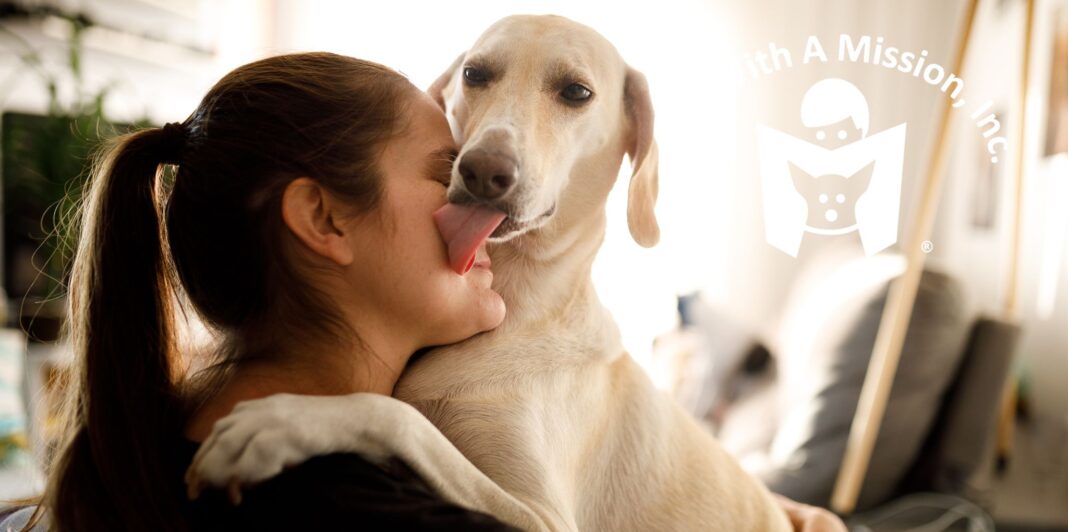They Need A Lap To Sit In
Not much is expected of most family dogs. The majority of us do not expect them to herd sheep, retrieve ducks, or to guard the homestead. We want them to be calm inside the house. We want them to play with their own toys and leave children’s toys, shoes, and clothing alone. While barking briefly when someone comes to the door is acceptable, frequent barking inside the house is not. Sitting or sleeping on the furniture is acceptable in many households but chewing on the couch cushions is never acceptable. Eliminating on pee pads in the laundry room may be acceptable, but using the whole house as their bathroom area is not. In other words, we want dogs who have some basic manners. We want our dogs to be good companions.
The Merriam-Webster dictionary defines the word companion as “an intimate friend or associate”. Over the years, humans have converted most dogs from being working animals to being our companions. Any breed of dog can be a companion to a person or family but companion dogs tend to be the smaller lap size pets. Companion animals are important to us as they spend time with us and give us unconditional love. They help relieve loneliness and stress. They have become our friends and family members. Where other dogs have jobs such as herders, hunters, or guardians, the primary purpose of companion animals is to be with people. Some of the popular companion breeds are: Bishon Frise, Chihuahua, French Bulldog, Lhasa Apso, Maltese, Miniature Poodle, Papillon, Pekingese, Pug, Shih Tzu, and Yorkshire Terrier.
So let us talk about some of characteristics or traits found in most companion dogs. They tend to be the smaller to medium sized breeds who are content to sit in a person’s lap or curl up next to them on the couch. They are likely to be more sedentary although they enjoy taking short walks or having some playtime. But mostly, they happily spend their time with their person or family. Generally, they are between five and eleven inches tall at their shoulder and weigh under eighteen pounds, although the tiny Chihuahua may weigh under six pounds and the stocky French Bulldog may weigh in nearer twenty-eight pounds. Their smaller size means that they can thrive in an apartment or in an urban setting. Of course, they can be happy and healthy in the suburbs and in rural areas too. They enjoy being with people, even strangers, but they usually do better with older children who can be gentle with them and who will be more respectful of their smaller size. Companion breeds are eager to please so they learn the obedience skills quickly but some individuals may be stubborn and harder to house train. The Bichon Frise excels at learning tricks. While individual dogs may differ from the average, most companion dogs live twelve to fifteen years, making them some of the longest-lived dog breeds.
Care needs to be taken with a companion or smaller dog’s environment. They need to be inside dogs. Smaller dogs have a harder time regulating their own body temperatures so they do not tolerate heat or cold well. I guess that explains why I see so many Chihuahuas wearing sweaters each winter. Sure, they go outside for a walk, or a bit of play in the backyard, or to potty, but they are not meant to live outside. The majority of their time needs to be inside in a controlled temperature environment.
Another common trait of smaller dogs is that they do not see themselves as small. That attitude can be a disadvantage when they interact with larger dogs. It is up to their people to be aware of that when their smaller dog is out and about and manage any interactions they have with larger dogs. In addition, smaller dogs are often very vocal unless they are taught when they are puppies that excessive barking is not acceptable. Another concern to be aware of is that small dogs may move near our legs and be outside our peripheral vision. As a result, they may get under our feet and cause a person to trip and be injured. With a little effort, smaller dogs can be trained to stay away from people’s feet. On the plus side, the companion dog’s smaller stature means that they can live and thrive in an apartment or in city or suburban environments. They eat less so the grocery bill is lower for them.
Have you ever, even for a few moments, thought about the life of a pampered companion pet? After all, pampered pets have good quality meals provided at regular times and all they have to do is show up at their feeding bowl and eat. They have someplace to sleep that is warm in the winter and cool in the summer. For many individuals, that place is on a human family member’s bed. They get to go on walks and rides in the car. They have toys, lots and lots of toys. Some of them even have their own wardrobes. They receive medical care when it is needed. They are loved. It is a good life. Years ago, I had a co-worker named Rose. She shared her life with a Rottweiler and a Dachshund. One day Rose said that in her next life she would like to come back as someone’s pampered pet. She would be such a good girl for her people. OK, I thought that was a bit unusual but I could understand her thought process. Responsible pet owners do put time and effort into caring for their family pets. They want their animals to be happy. Ultimately, they want their companion pets to be in their lives for many, many more years.















